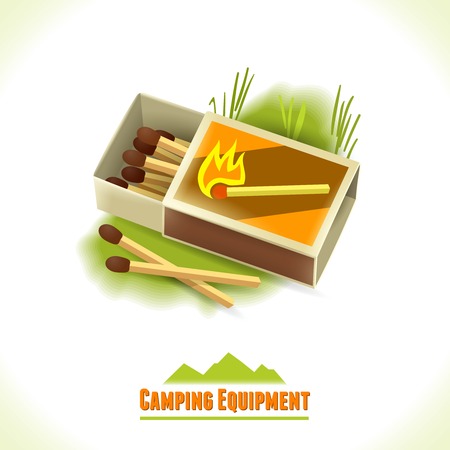Introduction: Redefining Backpacking in the Urban Jungle
When most people hear the word “backpacking,” they imagine rugged trails winding through national parks, quiet nights under the stars, and a connection to nature far from city lights. But what if the adventure could be just as thrilling within the heart of America’s largest cities? Urban backpacking is a fresh spin on traditional trekking, inviting explorers to trade dirt paths for bustling sidewalks, historic districts, and vibrant neighborhoods. This unique approach transforms the well-known concept of backpacking into an urban quest, challenging travelers to experience city life with the same curiosity and spirit of discovery they’d bring to the wilderness. By embracing urban backpacking, adventurers can uncover hidden gems, local culture, and unexpected beauty that make America’s cities their own kind of trail.
Packing Strategies for the City: Essentials, Tech, and Comfort
Urban backpacking requires a different approach than traditional wilderness trekking, especially when it comes to packing. Instead of loading up with sleeping bags, tents, and camp stoves, city backpackers carefully curate gear that blends comfort, utility, and style. Lightweight clothing layers replace bulky outdoor attire, while multipurpose items help maximize limited space. The focus shifts from survival essentials to daily convenience—think compact umbrellas for sudden rain showers or collapsible tote bags for spontaneous shopping trips.
City Backpacking Gear: Essentials vs. Traditional Outdoor Equipment
| Urban Essentials | Outdoor Gear (Skipped) |
|---|---|
| Reusable water bottle | Water purification tablets |
| Portable phone charger & USB cables | Solar panels |
| Comfortable walking shoes | Hiking boots |
| Slim backpack or messenger bag | Large multi-day pack |
| Public transit card holder | Map & compass |
The Role of Technology in Urban Packing
Technology is a game changer for urban explorers. Smartphones serve as navigation aids, language translators, and local guides all in one. Many urban backpackers download apps for public transit, dining recommendations, and event listings before hitting the road. Noise-canceling headphones are another favorite, making commutes on busy subways or buses more pleasant. For those who work remotely or document their adventures online, lightweight tablets or compact laptops are often prioritized over traditional outdoor tools.
Packing for Comfort Without Sacrificing Style
Blending into the city scene is just as important as staying comfortable. Urban backpackers opt for neutral colors and versatile pieces that transition from day sightseeing to evening outings without missing a beat. A lightweight jacket that repels rain but looks sharp at a café is more valuable than a heavy-duty shell meant for mountain storms. By tailoring their gear to the unique demands of city life—favoring tech-savvy solutions and stylish comfort—urban backpackers redefine what it means to “pack smart” for the trail less traveled.

3. Navigating the Concrete Trail: Transportation and Neighborhoods
Urban backpacking in America’s cities is all about embracing movement and exploration. Unlike wilderness trails, the urban landscape offers a unique blend of public transit, ride-shares, cycling paths, and walkable streets.
Mastering Public Transportation
Every major U.S. city has its own rhythm when it comes to public transportation. Whether you’re hopping on New York’s subway, taking a bus in Seattle, or riding the L in Chicago, understanding the local system is key. Download official city transit apps for real-time updates and route planning, and don’t be afraid to ask locals for tips—they often know shortcuts and tricks that aren’t on any map.
Going Beyond Buses and Trains: Ride-Shares and Bikes
If you want more flexibility, ride-sharing services like Uber and Lyft are available in most cities. They’re perfect for late nights or venturing into neighborhoods that aren’t as well-connected by public transit. Many American cities also boast robust bike-share programs—think Citi Bike in NYC or Divvy in Chicago—which offer an affordable, eco-friendly way to traverse neighborhoods at your own pace.
The Joy of Exploring on Foot
Some of the best urban adventures happen when you ditch wheels altogether. Walking allows you to soak in street art, stumble upon hidden cafes, and discover local shops. Always wear comfortable shoes and carry a reusable water bottle—it’s easy to rack up miles without realizing it!
Tips for Discovering Vibrant Neighborhoods
- Start with a popular district (like San Francisco’s Mission District or Atlanta’s Little Five Points), then wander into adjacent streets for a more authentic vibe.
- Check out local event calendars for festivals, markets, or pop-up events that bring neighborhoods alive.
- Ask baristas or shop owners where they hang out—locals are often the best guides to under-the-radar spots.
The Urban Backpacker’s Secret Weapon: Curiosity
No matter how you get around, stay curious. Each neighborhood tells a story through its people, food, music, and architecture. Let your curiosity guide you off the beaten path—you’ll find that every corner of America’s cities has something unique to offer.
4. Finding Shelter: Hostels, Couchsurfing, and Unique Local Stays
Urban backpacking isn’t just about exploring city streets—it’s also about where you lay your head at night. America’s cities offer a range of accommodation options that are not only affordable but also immerse travelers in local culture and community vibes. Whether you’re traveling solo or with friends, finding the right shelter can turn a good trip into a great adventure.
Hostels: The Social Hub for Urban Backpackers
Hostels have come a long way from their bare-bones reputation. In cities like New York, Chicago, and Los Angeles, hostels often provide modern amenities, organized social events, and communal kitchens where travelers swap stories. These spaces are perfect for meeting fellow backpackers and getting insider tips on the city’s hidden gems. Some even partner with local businesses to offer discounts on tours and activities.
Couchsurfing: Living Like a Local
If you’re looking to dive deep into American city life, Couchsurfing is your ticket in. Staying with locals gives you access to neighborhoods most tourists never see and insight into daily life that hotels simply can’t offer. Plus, it’s free—though it’s customary to bring a small gift or help out around the house as a thank-you gesture.
Unique Local Stays: Beyond the Usual
For those who want something different, many U.S. cities offer creative alternatives like boutique micro-hotels, artist lofts, and even historic firehouses converted into guesthouses. These unique stays often support neighborhood revitalization efforts and give back to the community.
Comparison of Popular Urban Accommodation Options
| Type | Average Cost per Night | Community Engagement | Best For |
|---|---|---|---|
| Hostel | $30–$60 | High (group events & shared spaces) | Social Travelers & Budget Backpackers |
| Couchsurfing | Free | Very High (local hosts & cultural exchange) | Adventurous Explorers & Cultural Enthusiasts |
| Unique Local Stay | $60–$120+ | Moderate (neighborhood immersion) | Travelers Seeking Authenticity & Style |
Pro Tip:
No matter which option you choose, always read recent reviews and communicate clearly with hosts before booking. Not only does this ensure your safety, but it also helps set expectations for an unforgettable urban backpacking experience right in the heart of America’s greatest cities.
5. Discovering Local Culture and Cuisine
One of the most rewarding aspects of urban backpacking in America’s cities is immersing yourself in local culture and savoring authentic cuisine.
Connecting with Locals
Step beyond the surface by engaging with residents. Start conversations at community parks, join neighborhood walking tours, or chat with small business owners. Many cities have public markets or free events where locals gather—these are perfect opportunities to make genuine connections and learn about hidden gems from those who know the city best.
Sampling Authentic Food
Skip the chain restaurants and seek out food trucks, pop-up stands, and hole-in-the-wall diners for a true taste of the city. Each urban neighborhood often boasts its own culinary specialties, from breakfast burritos in Los Angeles to deep-dish pizza in Chicago or soul food in Atlanta. Don’t be afraid to ask locals for their favorite spots—often, the best meals are found off the beaten path.
Attending Off-the-Radar Events
To experience a city like a true insider, look for events that aren’t listed on typical tourist guides. Check community bulletin boards, social media groups, or local newspapers for information about open mic nights, art walks, cultural festivals, and neighborhood block parties. Participating in these gatherings not only supports local communities but also provides a richer, more authentic urban adventure that you won’t find on mainstream itineraries.
6. Safety, Etiquette, and Sustainability in Urban Spaces
Urban backpacking is an adventure all its own, but exploring America’s cities comes with unique responsibilities. To make the most of your urban trek, staying safe, being a respectful visitor, and leaving a minimal environmental footprint are essential.
Stay Aware and Prepared
Safety should always be your top priority. Before heading out, research neighborhoods and understand local public transit systems. Stick to well-lit streets after dark, avoid flashing valuables, and keep your belongings close—many locals use crossbody bags or anti-theft backpacks for peace of mind. If you’re using rideshare apps or public transportation, double-check routes and times to avoid getting stranded late at night.
Respect Local Communities
Every city has its own vibe and unwritten rules. Be mindful of noise levels, especially in residential areas or when walking through neighborhoods early in the morning or late at night. Always yield sidewalks to families, people with disabilities, and the elderly. When visiting iconic sites or hidden gems, remember you’re sharing space with locals who call these places home—ask permission before photographing people or private property.
Practice Good Urban Etiquette
Good manners go a long way in crowded city settings. Stand to the right on escalators, keep group sizes manageable on sidewalks, and avoid blocking doorways or bike lanes. Say “please” and “thank you” when interacting with service staff or asking for directions—it’s simple but appreciated everywhere from New York City to San Francisco.
Sustainability Tips for City Backpackers
Minimize your impact by carrying a reusable water bottle, utensils, and shopping bag—many American cities encourage this as part of their green initiatives. Sort your trash properly; recycling bins are often color-coded and clearly marked. Support local businesses over chain stores for meals and souvenirs to help strengthen the community economy while reducing your carbon footprint.
Leave No Trace—Even Downtown
The Leave No Trace philosophy isn’t just for wilderness trails. Dispose of waste responsibly, stay on designated paths in parks, and participate in community clean-up events if you have the chance. By adopting these habits, urban backpackers can ensure that America’s vibrant cities remain welcoming, sustainable destinations for generations to come.


